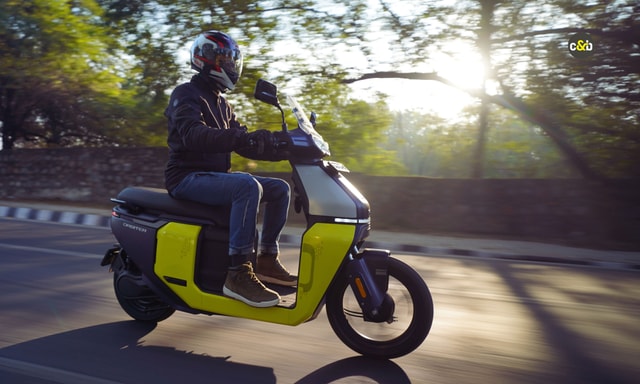How to Import Foreign Cars to India - Procedure, Guidelines

- The rules are different for used cars and new cars.
- Import duties lead to massive spendings.
- A lot of paperwork is also required.
The allure of mean machines is difficult to satiate and to many people, it does mean importing vehicles that aren't available for purchase in India. That's when they take to importing cars. However, the process is incredibly tricky, not to mention expensive. Here's everything you need to know about how to import foreign cars to India.
Huge costs

Photo Credit: pixabay.com
When you're importing a car to India, you will need to be aware of several costs that may even exceed its original price.
Import duty: You may need to pay import duty up to 165 percent of that car's cost, car insurance, and freight (CIF) value. For bikes, it's 116 percent.
Registration: To get a vehicle registered in India, you need to take it to the nearest RTO and pay the charges for registration as well as the road tax. These depend upon the type and cost of the vehicle.
Now there are different rules that you need to follow while importing different types of vehicles.
Conditions to abide by for importing new cars

Photo Credit: www.pexels.com
- The car must be manufactured or at least assembled outside India.
- It must only be imported from the country where it was built.
- It must not be previously sold, loaned, registered, or leased.
- It must have a right-hand drive.
- Its headlights must be suitable for illuminating the left side of the road
- Its speedometer should be set to kilometres and not miles.
- It must only be imported through naval docks in Mumbai, Chennai, or Kolkata.
Conditions to abide by for importing used cars

Photo Credit: www.pexels.com
- The used car's manufacturing year must not be more than three years.
- It should be loaned, leased, registered, or sold.
- It must have a right-hand drive.
- Its headlights must be suitable for illuminating the left side of the road.
- Its speedometer should be set to kilometres and not miles.
- It must only be imported through naval docks in Mumbai, Chennai, or Kolkata.
- It must have a roadworthiness certificate with a validity of at least 5 years.
Banned vehicles
A few types of vehicles are completely banned from being imported in India. They include:
- Cars with an engine capacity from 1,000cc to 2,500cc.
- Heavy-duty two-wheelers or bikes with engine capacity ranging from 50cc to 500cc.
- Scooters with an engine capacity ranging from 250cc to 800cc.
Paperwork And Documentation:

Photo Credit: www.pexels.com
The paperwork needed to import a vehicle into India includes:
- Invoice
- Insurance policy
- GATT Declaration
- Bank Draft
- Bill of Lading or Sea Waybill
- Import License
- Purchase Order/Letter of Credit
- Test report
- DEEC (Duty Exemption Entitlement Certificate) / DEPB (Duty Entitlement Pass Book) / ECGC (Export Credit Guarantee Corporation of India) or other documents as required.
That's all you need to know before you think about importing a vehicle into India. It's indeed a costly and time-consuming process, but if your heart just wants what it wants, go ahead and make sure that the car of your dreams is in keeping with all these regulations before beginning the process of getting it into the country.
Latest News
 car&bike Team | Jan 7, 2026Tata Punch Facelift Variants, Key Features RevealedThe Punch facelift will be offered in four familiar key trim levels and six variants.1 min read
car&bike Team | Jan 7, 2026Tata Punch Facelift Variants, Key Features RevealedThe Punch facelift will be offered in four familiar key trim levels and six variants.1 min read car&bike Team | Jan 7, 2026Skoda Kylaq Prices Hiked By Up To Rs 19,000Prices for the Kylaq subcompact SUV now start at Rs 7.59 lakh (ex-showroom).1 min read
car&bike Team | Jan 7, 2026Skoda Kylaq Prices Hiked By Up To Rs 19,000Prices for the Kylaq subcompact SUV now start at Rs 7.59 lakh (ex-showroom).1 min read Amaan Ahmed | Jan 7, 2026Ather 450X To Get Cruise Control; All 2025 Examples Will Receive Infinite Cruise Via OTA UpdateMore than 44,000 customers who bought the Ather 450X in 2025 will be eligible for the over-the-air update that will introduce 'Infinite Cruise'.1 min read
Amaan Ahmed | Jan 7, 2026Ather 450X To Get Cruise Control; All 2025 Examples Will Receive Infinite Cruise Via OTA UpdateMore than 44,000 customers who bought the Ather 450X in 2025 will be eligible for the over-the-air update that will introduce 'Infinite Cruise'.1 min read Jaiveer Mehra | Jan 7, 2026Afeela SUV Prototype Is Sony-Honda’s Next EVThe second model under the Sony-Honda joint venture to debut in production guise in 2028.1 min read
Jaiveer Mehra | Jan 7, 2026Afeela SUV Prototype Is Sony-Honda’s Next EVThe second model under the Sony-Honda joint venture to debut in production guise in 2028.1 min read Jaiveer Mehra | Jan 6, 2026Mahindra XUV 3XO EV Launched In India; Prices Start At Rs 13.89 LakhEssentially the successor to the XUV 400 EV, the 3XO EV is offered in two trim levels and solely with a 39.4 kWh battery.1 min read
Jaiveer Mehra | Jan 6, 2026Mahindra XUV 3XO EV Launched In India; Prices Start At Rs 13.89 LakhEssentially the successor to the XUV 400 EV, the 3XO EV is offered in two trim levels and solely with a 39.4 kWh battery.1 min read Jaiveer Mehra | Jan 6, 2026Nissan Tekton SUV World Premiere On February 4The Tekton will make its debut hot on the heels of the Gravite and will share its platform with the upcoming new Duster.1 min read
Jaiveer Mehra | Jan 6, 2026Nissan Tekton SUV World Premiere On February 4The Tekton will make its debut hot on the heels of the Gravite and will share its platform with the upcoming new Duster.1 min read
 Amaan Ahmed | Jan 3, 2026VLF Mobster 135 300 KM Review: Fun But FlawedA 125 cc scooter with Italian design and Chinese genes is a rare combination, and while some may be tempted to dismiss it because of its origins, the VLF Mobster shows 125s can also be exciting – but not without compromises.11 mins read
Amaan Ahmed | Jan 3, 2026VLF Mobster 135 300 KM Review: Fun But FlawedA 125 cc scooter with Italian design and Chinese genes is a rare combination, and while some may be tempted to dismiss it because of its origins, the VLF Mobster shows 125s can also be exciting – but not without compromises.11 mins read Preetam Bora | Dec 30, 2025TVS Orbiter Review: Real-World Performance and Range TestedThe TVS Orbiter is a promising electric scooter promising decent range, practicality and pricing. But is there any reason to avoid it? We spent a few days getting to know it better.9 mins read
Preetam Bora | Dec 30, 2025TVS Orbiter Review: Real-World Performance and Range TestedThe TVS Orbiter is a promising electric scooter promising decent range, practicality and pricing. But is there any reason to avoid it? We spent a few days getting to know it better.9 mins read Jafar Rizvi | Dec 24, 2025MG Windsor EV 38 kWh Long-Term Report: IntroductionThe Windsor EV has joined our garage, and before it settles into daily duty, I took it out to get a sense of what living with an electric car is like.4 mins read
Jafar Rizvi | Dec 24, 2025MG Windsor EV 38 kWh Long-Term Report: IntroductionThe Windsor EV has joined our garage, and before it settles into daily duty, I took it out to get a sense of what living with an electric car is like.4 mins read Seshan Vijayraghvan | Dec 23, 20252026 Kia Seltos Review: Formula Is Spot On, But Is The Timing Right?The 2nd-gen Kia Seltos has arrived, but it has the challenge of facing strong rivals like the Victoris and Sierra. The question is simple - Does it still have what it takes?9 mins read
Seshan Vijayraghvan | Dec 23, 20252026 Kia Seltos Review: Formula Is Spot On, But Is The Timing Right?The 2nd-gen Kia Seltos has arrived, but it has the challenge of facing strong rivals like the Victoris and Sierra. The question is simple - Does it still have what it takes?9 mins read car&bike Team | Dec 26, 2025Tata Punch EV Long-Term Second Report: Highway Performance, Pros & ConsAfter a week of living with the Tata Punch EV Long Range—including a proper Mumbai-Nashik highway test—we've learned what this little electric SUV is really made of.1 min read
car&bike Team | Dec 26, 2025Tata Punch EV Long-Term Second Report: Highway Performance, Pros & ConsAfter a week of living with the Tata Punch EV Long Range—including a proper Mumbai-Nashik highway test—we've learned what this little electric SUV is really made of.1 min read






















































































































